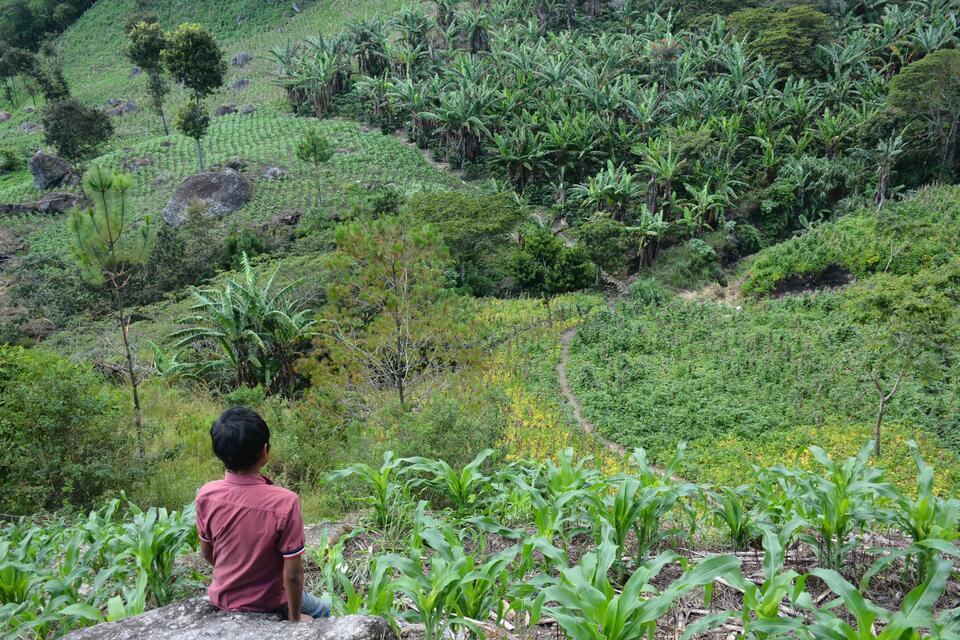Climate Smart Villages in Guatemala and Honduras as Local Innovation Platforms for Scaling Ecosystem-based Adaptation
- From
-
Published on
10.04.25
- Impact Area

The municipalities of Santa Rita (department of Copán, Honduras) and Olopa (department of Chiquimula, Guatemala), are located in the Central American Dry Corridor region, characterized by irregular rainfall, high susceptibility to climate variability, and, according to IPCC models, high vulnerability to climate change. These challenges will be critical for farmers due to the effects that climate has on cash crops such as coffee (Bunn, Castro and Lundy, 2018), fundamental for the region’s economy, as well as for self-consumption crops such as maize and beans (Eitzinger et al., 2017).
What’s the story?
In recent years, more frequent droughts have forced many farming families to push their land and resources to the limit. However, this short-term strategy has a downside: overusing natural resources weakens the land and makes it even harder to cope with future climate impacts. That means lower harvests, lower incomes, and fewer opportunities to improve living conditions.
Related news
-

DTA at COP30: Why Digital Transformation Belongs at the Heart of Climate Action
Climate Action Science Program13.11.25-
Adaptation
-
Climate adaptation & mitigation
-
Mitigation
As the world gathers in Brazil for COP30, the conversations are once again focused on…
Read more -
-

COP30: Italy joins global champions to drive food systems transformation
Climate Action Science Program13.11.25-
Adaptation
-
Climate adaptation & mitigation
-
Mitigation
11 November 2025, Belém: Italy joined the Alliance of Champions for Food Systems Transformation (AC…
Read more -
-

Accelerating wheat breeding, from Toluca in Mexico to the world
CGIAR Initiative on Breeding Resources12.11.25-
Climate adaptation & mitigation
-
Nutrition, health & food security
In Mexico, a project has been completed to develop new elite parental lines of wheat…
Read more -
